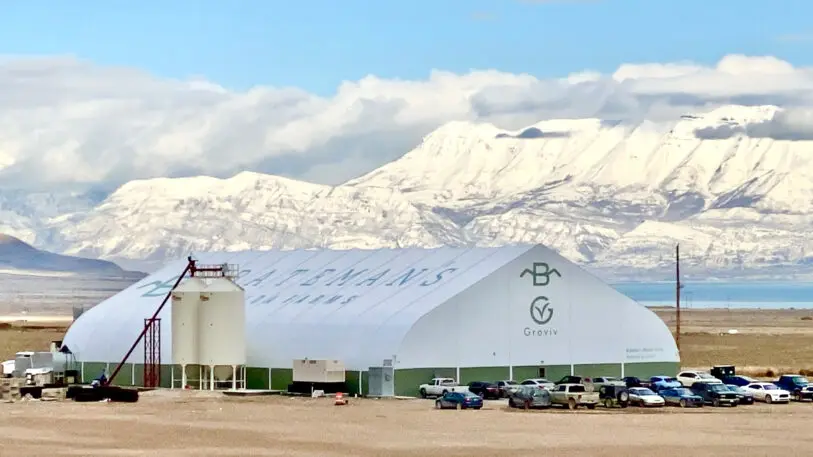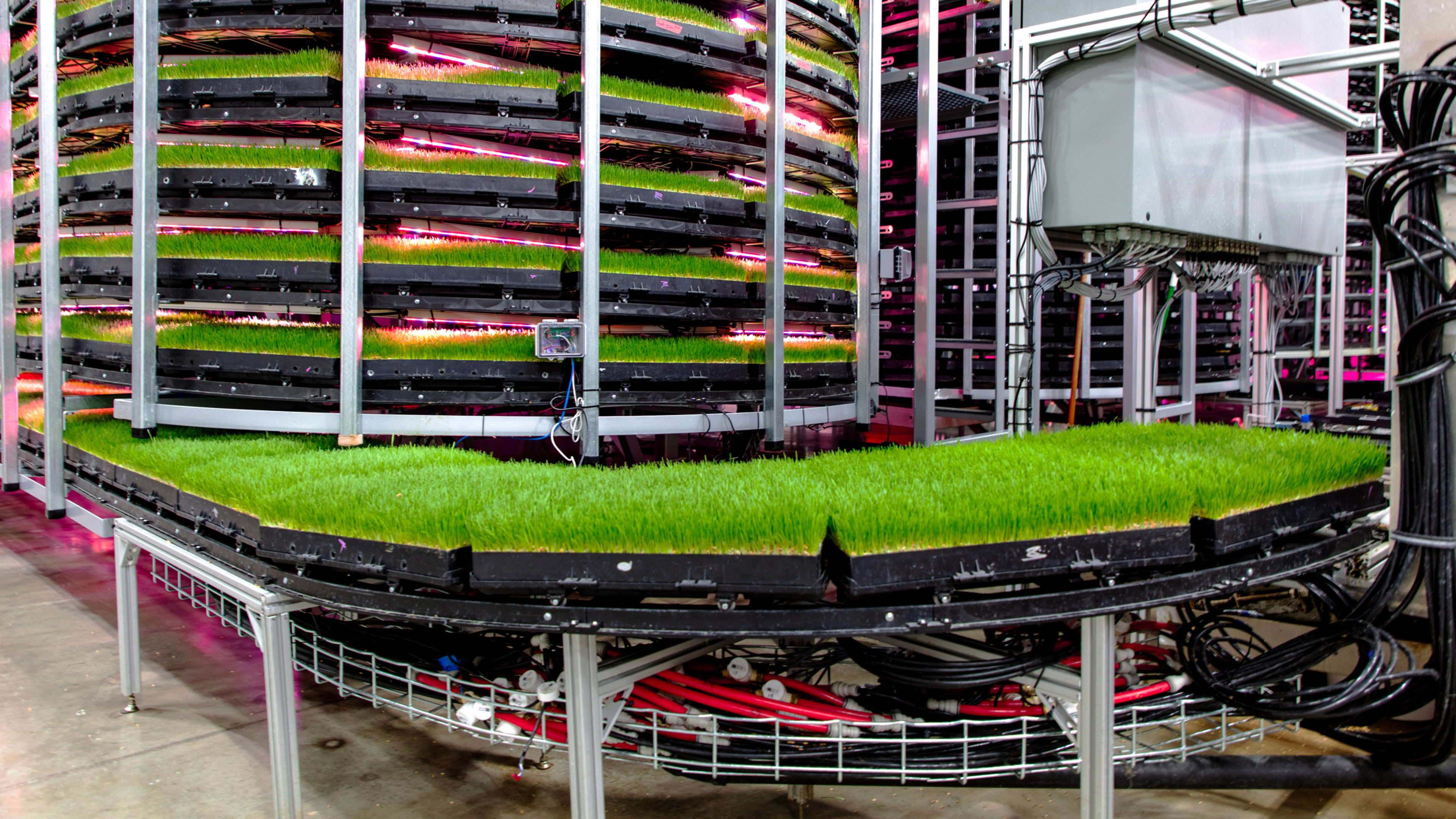Inside a new tent-like building on a large dairy farm west of Provo, Utah, tall towers stacked with trays of wheatgrass grow food for the cows outside. While most other vertical farms focus on growing salad greens for city dwellers, the new system is designed to tackle another challenge: the environmental footprint of growing feed for livestock.
A single tower in the growing system, from a startup called Grōv Technologies, takes up a little more than 850 square feet on the ground. But it can grow as much wheat or barley grass as 35 to 50 acres of farmland, the company says. Right now, an inordinate amount of land in the contiguous U.S.—around 780 million acres, or 41% of the total area—is used to grow feed for farm animals, either on pastures or through growing crops. And the demand continues to grow. “The availability of arable land, especially for animal feed, is shrinking,” says Steve Lindsley, president of Grōv Technologies.


Grōv provides support, but the system is designed to operate on its own, without any additional labor needed from the farmer. The system is also designed to minimize operating costs. The startup’s custom lights, for example, don’t put out heat, avoiding the large air-conditioning bills that are necessary in some other indoor farms. (The company says that the system can also run on renewable energy, and it plans to reach net-zero emissions by 2025.)
In early tests with hundreds of cows in 2019, the dairy found that the feed was more nutritious than its standard feed; the cows ate less, helping save money, while producing the same amount of milk. Grōv estimates that farmers can break even on their investment in the technology in three years. As climate change progresses, growing indoors can also help mitigate risk from increasing droughts, heatwaves, floods, wind storms, and other extreme weather conditions.
The technology isn’t intended to fully replace conventional farming, but to provide one portion of the mix of food that cattle eat. At the farm in Utah, the new pilot system will provide 15% of the food for around 2,000 cows. But even replacing a fraction of conventional farming has the potential to make a meaningful difference. (That’s especially true if some farmland could be reforested, helping suck up excess carbon from the atmosphere to fight climate change.)
Lindsley argues that the environmental benefits could help dairy and beef farmers compete in a world where an increasing number of consumers are turning to plant-based foods. “The industry can utilize this technology as a counterpunch, really, to some of the lab-based protein efforts or the competitive efforts that are trying to pull people away from beef and/or dairy products,” he says.
Recognize your brand’s excellence by applying to this year’s Brands That Matter Awards before the early-rate deadline, May 3.
